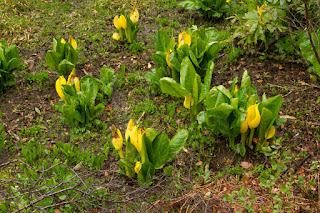Adrian led a party of six hardy
souls to Blashford Lakes on what turned out to be a very wet morning. Thank
goodness for the hides where we spent most of the time. From the Tern Hide we
could concentrate on the wildfowl as there were few gulls. Brian spotted one of
the best birds – a Water Pipit feeding along the water’s-edge near the hide
before it flew away across the lake. There were several Goldeneye, including a
very smart drake, as well as Tufted Duck and Pochard present in some numbers,
but we only saw two Goosanders. Dabbling ducks were mostly sheltering on the
far side of the lake and included Wigeon and Shoveler. We saw an Egyptian Goose
and later two Greylags flew over as we were leaving to walk to the Woodland
Hide.
 |
| Birch Polypore |
|
|
|
As we walked through the wooded areas we saw a Goldcrest and nearer the Woodland Hide Siskins were feeding noisily
high in the Alders above the path. Down at ground level several fungi grew including
Birch Polypore, Scarlet Elf Cup and Turkeytail. Dangling Hazel catkins were an early
indication that Spring might be around the corner, although judging by
today’s weather forecast that’s still some way off!
 |
| Male Brambling |
From the Woodland Hide we were
delighted with excellent views of a wintering male Brambling at one of the
feeders as well as good views of a female Great Spotted Woodpecker. Another
highlight were three Reed Buntings – two males and a female.
The rain had turned heavier by the
time we reached Ivy North Hide, where we had superb views of one of the two
Great White Egrets that are frequenting Blashford this winter. It sported elegant
back plumes used in display in the breeding season. A Water Rail was seen
briefly before we walked back to the Tern Hide where there was little new. Around
12:30 we called it a day, but a very good day for 57 bird species in such lousy
weather was our reward!








